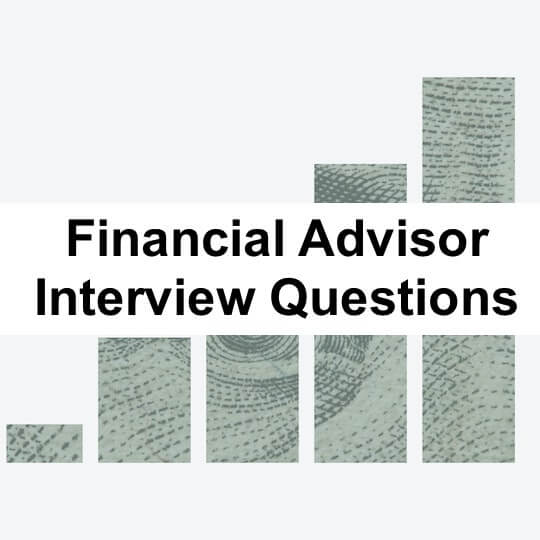
It is a wise decision to invest in a qualified 401k without a redemption fee. You won't have pay out of pocket to get the money but you will still be able to enjoy all the benefits. However, before you commit to a plan there are a few things you need to consider.
Investing in a 401k with a 0.50% annual fee
The fees associated with your 401k should be considered when investing. There are usually two types fees: individual participant fees or plan fees. Plan fees are used to cover the cost of administering the plan. Individual participant fees, on the other hand, are used for optional services. Both are deducted from your account and should be understood before you decide which investment fund to invest in.
Most investment fees are charged as a percentage from the account balance. A fund charging a 0.50% annually fee will cost you $300 if you invest $50,000. These fees quickly add up and can easily reach $3,000 per annum by the age of retirement. The fees could cut your savings by thousands.

A portfolio that is suited to your financial situation will help you achieve your financial goals. For instance, stock funds can offer a better return if you're looking for higher returns. Diversifying your portfolio can help you reduce risk and maximize your return. You should not exceed your risk tolerance.
If you're looking for the lowest costs, low-cost investments are often the best choice. Higher expenses might be more appealing to you if your tolerance for risk is higher. This could lead to higher returns and access to an experienced investment manager. In each case, you must decide whether the fees you pay are reasonable.
Investing in a retirement plan with a 2% annual charge
An investment in a retirement plan (401(k),) can be a wise choice provided that the fees are affordable. Usually, the annual fee is 1% or less, although some plans charge more. It's also important to remember that the amount you will pay can affect your return on investment. For example, if you have $50,000 in your 401(k) and it charges 2% annual redemption fee, your return on investment will be reduced by $500. Employers may agree to pay a portion of these fees, provided that the plan has a low cost ratio. This helps ensure that a large percentage of your contribution gets invested.
Even though investors may not pay attention to these fees, they can be an expensive hidden expense. A recent TD Ameritrade survey revealed that only 27% of participants knew about their 401(k). Fees can have an adverse impact on your return, so it's important to look for plans with low annual costs.

Make sure you choose a 401 (k) plan that is long-term. Although the funds in a 401(k) account should be held for the long-term, it's possible to liquidate them and get some cash. If you are in urgent need of cash, you can borrow from your 401(k) account. This is money you can use for the rest your life.
FAQ
What is wealth administration?
Wealth Management involves the practice of managing money on behalf of individuals, families, or businesses. It encompasses all aspects financial planning such as investing, insurance and tax.
How do I get started with Wealth Management?
First, you must decide what kind of Wealth Management service you want. There are many types of Wealth Management services out there, but most people fall into one of three categories:
-
Investment Advisory Services- These professionals will help determine how much money and where to invest it. They also provide investment advice, including portfolio construction and asset allocation.
-
Financial Planning Services - This professional will work with you to create a comprehensive financial plan that considers your goals, objectives, and personal situation. Based on their expertise and experience, they may recommend investments.
-
Estate Planning Services – An experienced lawyer can guide you in the best way possible to protect yourself and your loved one from potential problems that might arise after your death.
-
If you hire a professional, ensure they are registered with FINRA (Financial Industry Regulatory Authority). If you do not feel comfortable working together, find someone who does.
Where To Start Your Search For A Wealth Management Service
If you are looking for a wealth management company, make sure it meets these criteria:
-
Reputation for excellence
-
Locally based
-
Offers free initial consultations
-
Supports you on an ongoing basis
-
Has a clear fee structure
-
Has a good reputation
-
It is simple to contact
-
Offers 24/7 customer care
-
Offers a wide range of products
-
Low charges
-
Do not charge hidden fees
-
Doesn't require large upfront deposits
-
You should have a clear plan to manage your finances
-
You have a transparent approach when managing your money
-
Makes it easy for you to ask questions
-
A solid understanding of your current situation
-
Learn about your goals and targets
-
Are you open to working with you frequently?
-
Works within your financial budget
-
Have a solid understanding of the local marketplace
-
Is willing to provide advice on how to make changes to your portfolio
-
Is available to assist you in setting realistic expectations
Do I need to pay for Retirement Planning?
No. You don't need to pay for any of this. We offer free consultations that will show you what's possible. After that, you can decide to go ahead with our services.
Statistics
- Newer, fully-automated Roboadvisor platforms intended as wealth management tools for ordinary individuals often charge far less than 1% per year of AUM and come with low minimum account balances to get started. (investopedia.com)
- If you are working with a private firm owned by an advisor, any advisory fees (generally around 1%) would go to the advisor. (nerdwallet.com)
- These rates generally reside somewhere around 1% of AUM annually, though rates usually drop as you invest more with the firm. (yahoo.com)
- According to Indeed, the average salary for a wealth manager in the United States in 2022 was $79,395.6 (investopedia.com)
External Links
How To
How to Invest Your Savings to Make Money
You can earn returns on your capital by investing your savings into various types of investments like stock market, mutual fund, bonds, bonds, real property, commodities, gold and other assets. This is called investment. It is important to understand that investing does not guarantee a profit but rather increases the chances of earning profits. There are many options for how to invest your savings. These include stocks, mutual fund, gold, commodities, realestate, bonds, stocks, and ETFs (Exchange Traded Funds). We will discuss these methods below.
Stock Market
Because you can buy shares of companies that offer products or services similar to your own, the stock market is a popular way to invest your savings. You can also diversify your portfolio and protect yourself against financial loss by buying stocks. For example, if the price of oil drops dramatically, you can sell your shares in an energy company and buy shares in a company that makes something else.
Mutual Fund
A mutual fund refers to a group of individuals or institutions that invest in securities. They are professional managed pools of equity or debt securities, or hybrid securities. The investment objectives of mutual funds are usually set by their board of Directors.
Gold
The long-term value of gold has been demonstrated to be stable and it is often considered an economic safety net during times of uncertainty. Some countries also use it as a currency. In recent years, gold prices have risen significantly due to increased demand from investors seeking shelter from inflation. The supply/demand fundamentals of gold determine whether the price will rise or fall.
Real Estate
Real estate includes land and buildings. If you buy real property, you are the owner of the property as well as all rights. For additional income, you can rent out a portion of your home. You may use the home as collateral for loans. The home may also be used to obtain tax benefits. Before buying any type property, it is important to consider the following things: location, condition and age.
Commodity
Commodities are raw materials, such as metals, grain, and agricultural goods. These items are more valuable than ever so commodity-related investments are a good idea. Investors who want to capitalize on this trend need to learn how to analyze charts and graphs, identify trends, and determine the best entry point for their portfolios.
Bonds
BONDS ARE LOANS between governments and corporations. A bond is a loan agreement where the principal will be repaid by one party in return for interest payments. Bond prices move up when interest rates go down and vice versa. A bond is purchased by an investor to generate interest while the borrower waits to repay the principal.
Stocks
STOCKS INVOLVE SHARES OF OWNERSHIP IN A CORPORATION. Shares represent a fractional portion of ownership in a business. If you own 100 shares, you become a shareholder. You can vote on all matters affecting the business. Dividends are also paid out to shareholders when the company makes profits. Dividends are cash distributions paid out to shareholders.
ETFs
An Exchange Traded Fund (ETF), is a security which tracks an index of stocks or bonds, currencies, commodities or other asset classes. ETFs trade just like stocks on public stock exchanges, which is a departure from traditional mutual funds. The iShares Core S&P 500 eTF, NYSEARCA SPY, is designed to follow the performance Standard & Poor's 500 Index. This means that if you bought shares of SPY, your portfolio would automatically reflect the performance of the S&P 500.
Venture Capital
Venture capital is private funding that venture capitalists provide to entrepreneurs in order to help them start new companies. Venture capitalists lend financing to startups that have little or no revenue, and who are also at high risk for failure. Venture capitalists invest in startups at the early stages of their development, which is often when they are just starting to make a profit.